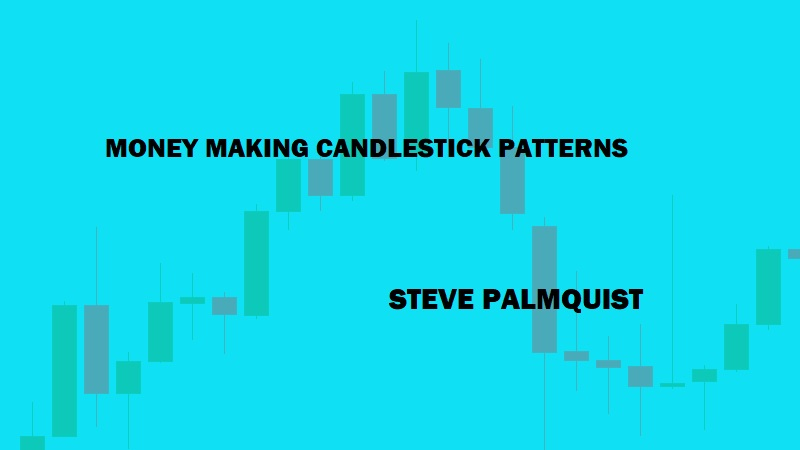Market Adaptive Trading Techniques - TheForex7
Market adaptive techniques, Trading in market adaptive techniques, Bullish and Bearish engulfing pattern summary, Hammer and Hanging Man pattern summary, Morning and Evening Star summary
Course: [ MONEY MAKING CANDLESTICK PATTERNS : Chapter 8: Market Adaptive Trading Techniques ]

Market Adaptive Trading Techniques refer to a set of strategies used by traders and investors to adjust their investment decisions based on changes in market conditions. These techniques are designed to take advantage of market volatility and changes in market trends, with the goal of maximizing profits and minimizing losses.
MARKET ADAPTIVE TRADING TECHNIQUES
In
the previous chapters of this book, we looked at several common candlestick
patterns and used backtesting techniques to determine how often they were
successful. We also developed an understanding of how variations of the pattern
definition, and different filters, affect trading results. Developing, testing,
and understanding a set of tools, or trading patterns, is one of the key steps
in successful trading.
Another
key requirement of successful trading is the ability to analyze the current
market conditions in order to determine appropriate risk levels and to select
the best patterns for trading. Remember, most patterns are more effective in
certain market conditions and matching the right tool to the job can help us
trade more effectively. Trading the same pattern all the time may just churn
the account. Traders need to use their research to trade the most statistically
favorable patterns.
Analyzing
the price and volume patterns in the market and then selecting the best trading
tools and using appropriate risk management is a process I refer to as market
adaptive trading (MAT). Since the market will not adapt to us, we must adapt to
it. Trying to predict what the market will do, or to what level it will move,
is difficult to do and, more importantly, not necessary. Successful traders
analyze the current market conditions and then develop a trading plan that
outlines what the market would have to do to make them focus on longs, shorts,
or cash; in addition, they determine how much risk to take in a given market
environment.
The
market has three basic modes; it can be trending up, trending down, or moving
within a trading range. As shown by our candlestick pattern testing, most
trading tools work best in a trending environment; and thus, when the market is
trending, I tend to trade more positions and use larger position sizes. Trading
ranges diminish the results of many trading patterns, and I compensate for the
increased risk by reducing position sizes and the number of positions I trade.
Trend
lines are one of the best tools for determining when the market is moving from
one mode to another. If the market is in an uptrend, then it has to break an
ascending trend line to move to a significant basing area or start a downtrend.
Similarly if the market is in a downtrend, it has to break a descending trend
line in order to form a significant base or start a new uptrend. Trend line
breaks are usually a time to adjust risk by changing position sizes and the
number of positions being traded.
Trend
lines drawn on the NASDAQ chart are one of the trader’s best friends. When the
NASDAQ is trading above an ascending trend line, I focus on trading longs using
patterns that have tested well in bullish markets. When the market is moving
below a descending trend line, I focus on trading patterns that have tested
well in bearish environments. When the market breaks a trend line, it is a call
to action. It indicates that conditions may be changing, and I reduce risk by
reducing position sizes until the market makes its intentions clear.
The Market Doesn’t Care What You Believe
Market
adaptive trading is not developing a trading plan based on what you feel the
market will do, or based on what the “experts” are
saying it will do. In short, no one knows what the market will do; it is best
to make a plan for each of the three basic actions that market can take, then
trade the plan.
Listen
to the market, not what people are saying about it. For example, at a recent
trading conference I heard the following statements from those who are
considered market experts.
- I continue to believe oil stocks are going to pull back.
- I didn’t make money in it the last time I got involved and am inclined to believe that the best way to handle an investment or trade in BAX is employing patience.
- I believe that this instrument will deliver gains from this point going forward. That is why I am involved. No other reason.
The
issue with all these statements is that they are presenting a belief, with no
real information about why it might be true. It is great that someone believes
oil stocks will pull back, or that some stock will deliver gains going fore word.
The fundamental issue, of course, is that the market does not care what we
believe. We can believe something as strongly as we want, the market will not
care.
The
market shows us what it thinks through price and volume patterns. Learning to
read these patterns is a key part of trading success. Predicting how far the
market is going to move, or what the year end closing value will be has little
value since no one has been able to consistently do this year after year.
However, reading the market’s price and volume patterns to determine how much
risk to be taking and what tools to be using is something that can be of great
benefit to traders.
Rather
than trying to forecast direction, traders should focus on identifying key
trigger levels and then trading with the market. Traders need to use tools from
their trading tool box that are appropriate for the current market conditions.
Knowing how each of the tools in the trading tool box performs in each of the
basic market modes allows traders to select the most appropriate tool to be
using. Using the same trading tool in all market conditions will just give
traders a lot of practice exercising stops.
There
are several steps to developing a market adaptive trading (MAT) plan.
Step One:
Develop, test, and understand several trading patterns. These are the tools in
the trader’s tool box. The first seven chapters of this book have outlined this
process for several candlestick patterns.
Step Two:
Understand basic market statistics. If traders do not know how the market
reacts in common situations like new highs, new lows, gaps, closing in the top
or bottom of the range, etc., then they cannot capitalize on the fact that
these common situations can provide leverage for knowledgeable traders.
Step Three:
Use trend lines on the NASDAQ chart. This technique keeps traders focused on
using the right tools for the job and helps them determine when to reduce risks.
Step Four:
Write down your daily trading plan. Look at the current market conditions and
determine if they are favorable to trading longs, shorts, or remaining in cash.
If the market is in a clear trend, then normal position sizes may be used. If
the market is in a trading range, then half size positions may help compensate
for the increased risk.
Now,
let’s look at each of these steps in more detail.
MAT STEP ONE: DEVELOP, TEST, AND UNDERSTAND TRADING TOOLS
The
first step in market adaptive trading is to develop, test, and understand
several trading patterns. These are the tools in the trader’s tool box. As we
have seen, testing identifies filters that can improve a pattern’s trading
results and the best market conditions in which to use the pattern. We can then
use trend lines to determine when to switch between different trading tools.
The
trading tools we have developed so far are the bullish engulfing, bearish
engulfing, hammer, hanging man, morning star, and evening star candlestick
patterns. These are the tools available to us for trading and should be
selected for use when the market conditions are most favorable for a particular
pattern. A quick summary of what we’ve learned is below.
BULLISH ENGULFING PATTERN SUMMARY
The
bullish engulfing pattern is one that shows positive results in multiple
timeframes. We saw that two simple additions to the basic pattern definition
significantly improved the results. This trading pattern should be avoided when
the market is in a downtrend.
The
pattern was also significantly improved by focusing on trading those that have
above average volume on the first day. The effort put into backtesting allowed
us to quickly analyze the results of thousands of trades and find two simple
techniques to nearly triple the annualized ROI for this pattern.
BEARISH ENGULFING PATTERN SUMMARY
We found that the bearish engulfing pattern may be improved by: using it in downtrending or bearish markets; using a three to five day holding period; using it on higher-priced stocks; looking for volume on the second day of the pattern that is larger that the volume on the first day of the pattern; and taking patterns when the top of the second day’s body is at least 15% of the day’s range above the top of the first day’s body.
Based on the test results shown in chapter three I would not trade the basic bearish engulfing pattern in all markets. I would confine its use to bear market conditions, and I would use the volume filter. It would not be the only pattern I trade, but is an interesting addition to the trader’s tool box and one of the patterns I look at when the conditions are right.
HAMMER PATTERN SUMMARY
Through
our testing, we found that the hammer pattern may be improved by: requiring the
upper shadow be at least 5% of the day’s range; trading stocks priced under
$30, trading stocks with average daily volume under a million shares; trading
with volume at 160% or more of the previous day’s volume; trading hammers whose
range is the largest range of the last 5 days.
The
results in chapter four indicate that the basic hammer pattern can be
significantly improved by only trading the pattern when the day’s trading range
is the largest of the last five sessions. Since the wide range hammer filter
nearly doubles annualized ROI in tests involving two different timeframes and
covering almost five years, it is something worth considering when trading this
pattern. The wide range hammer generally does not test well during periods when
the market is in a downtrend.
HANGING MAN PATTERN SUMMARY
Our
results showed that the hanging man pattern may be improved by trading the
pattern in bearish markets and requiring the pattern to occur as the highest
high of the last five days. Even with these improvements, the hanging man
pattern was not as effective as the others. Some patterns are good tools to
use, and some patterns are best left alone.
The
basic hanging man trading pattern, discussed in chapter five, does not produce
favorable results when used continuously through a variety of market
conditions. It is not an all-weather tool. It does show good results in several
downtrending or bear markets. In fact, the market conditions have a much
stronger effect on these results than any of the other filters tested. It
should be avoided in uptrending or bullish markets. A holding time around five
days seems to work best, and patterns that occur around recent highs may be
more productive.
MORNING STAR PATTERN SUMMARY
Our
test results indicate that the results of the morning star pattern may be
improved by: trading patterns with a first day’s black body larger than the
previous day’s body; requiring the second day’s body to be less than 60% of the
day’s range; requiring the close of the second day of the pattern to be below
the low of the first day of the pattern, when the second day of the pattern has
a black body; and using a four to five day holding period.
In
chapter six we found that the basic morning star pattern is statistically equal
to a coin flip and after testing a number of different modifications and
variations to the basic morning star definition, we found that slight changes
to the definition of the morning star can significantly improve results. These
slight changes to the definition take the pattern from a break even result to
something that beats buy and hold and shows about 59% of the trades as
profitable.
EVENING STAR PATTERN SUMMARY
After
our testing, we found that the evening star pattern may be improved by:
requiring that the third day of the pattern has a body length that is the
largest body length in the last five days; taking evening star patterns with
white space gaps on the third day; having the body on the second day of the
pattern be white; and requiring the first day’s body to be the largest in the
last three days, when recent average volume is declining.
The
test results for the evening star pattern shown in chapter seven showed why I
would not trade the basic evening star as first defined since the results were
less than buy and hold and it showed losing trades most of the time. Using
backtesting to analyze various parameter changes and filters resulted in
changes that turned the original pattern from something I would pass on to
something I would consider using.
Now
that we have a better understanding of how each of the candlestick patterns
perform, and have identified specific ways to improve the results of each
pattern, we need to look at some basic market statistics. Knowing what the
market typically does in common situations helps us to determine whether or not
to be taking trades, and if so, how aggressively to be trading. There is a lot
more to successful trading than just identifying a pattern and entering a
trade.
MONEY MAKING CANDLESTICK PATTERNS : Chapter 8: Market Adaptive Trading Techniques : Tag: Candlestick Pattern Trading, Forex : Market adaptive techniques, Trading in market adaptive techniques, Bullish and Bearish engulfing pattern summary, Hammer and Hanging Man pattern summary, Morning and Evening Star summary - Market Adaptive Trading Techniques - TheForex7





